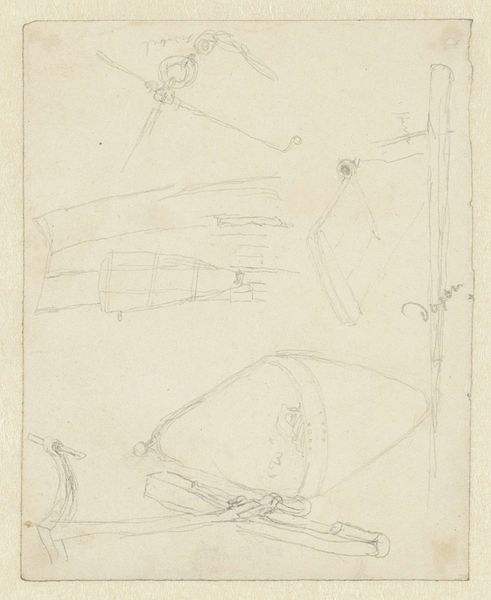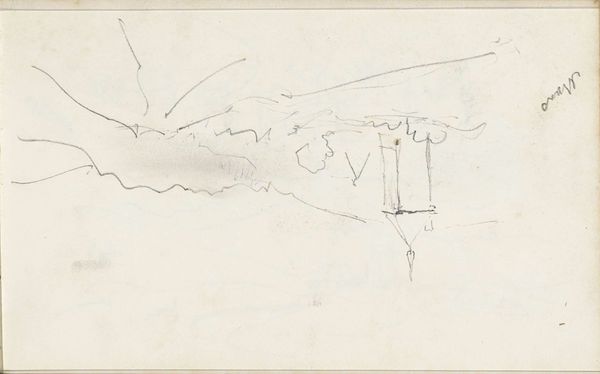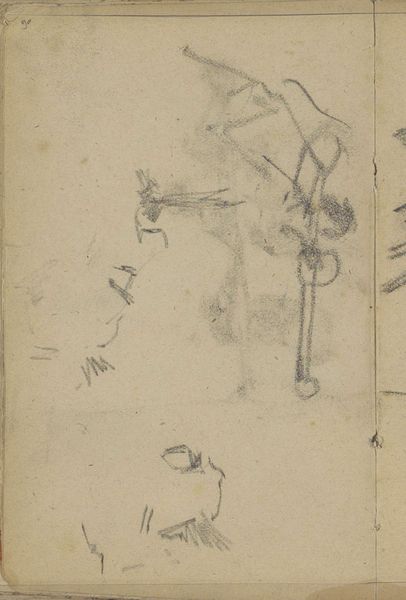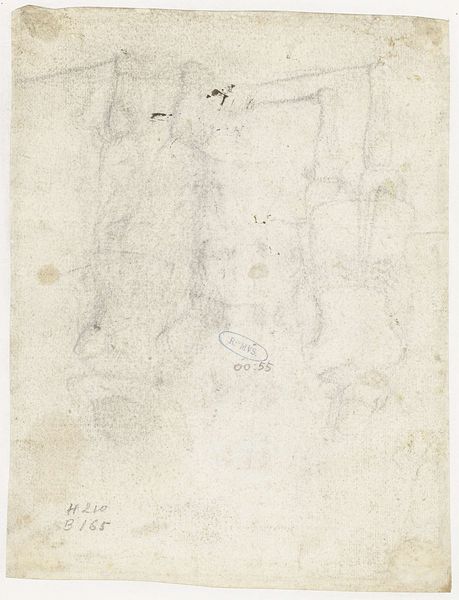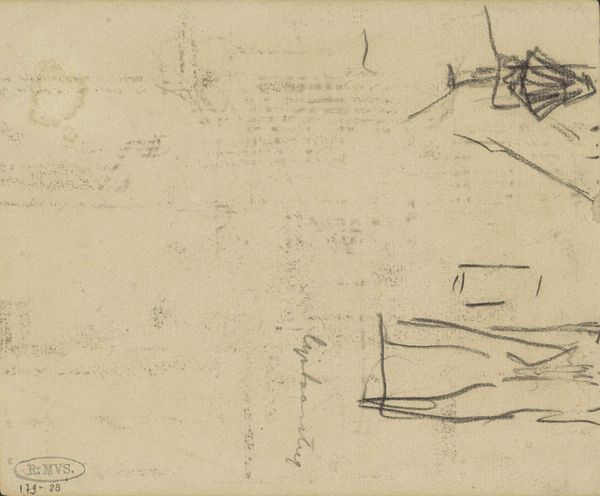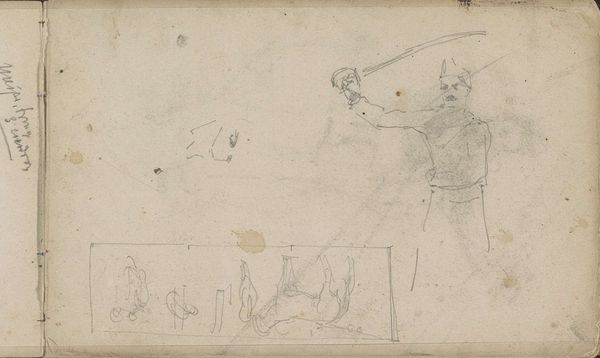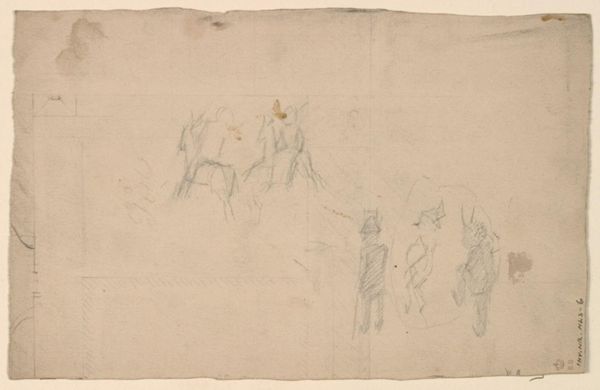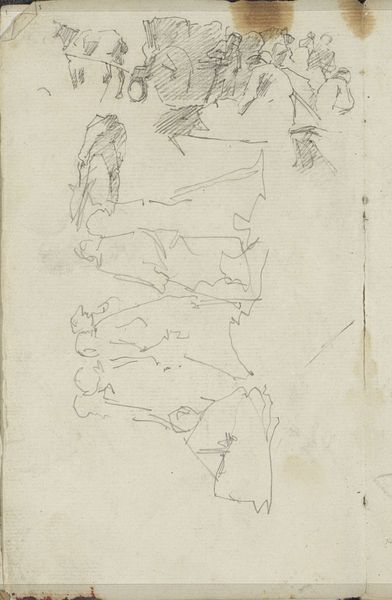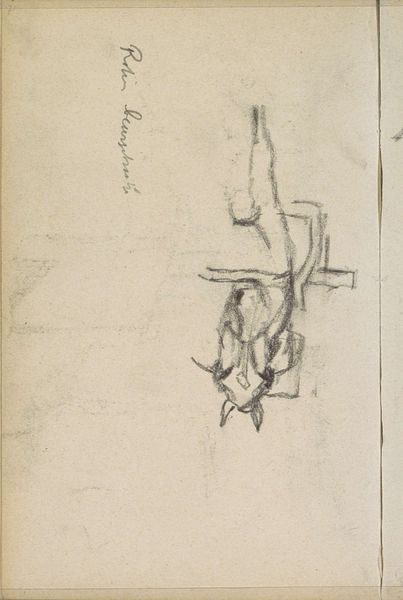
Tre skitser af stående mand set bagfra, og f.n. et hus med højt tag 1879 - 1880
0:00
0:00
drawing, paper, pencil
#
drawing
#
impressionism
#
pencil sketch
#
landscape
#
paper
#
pencil
Dimensions: 209 mm (height) x 266 mm (width) (bladmaal)
Editor: This pencil drawing, "Tre skitser af stående mand set bagfra, og f.n. et hus med højt tag" (Three sketches of a standing man seen from behind, and a house with a high roof), by Paul Gauguin, created around 1879-1880, feels very simple and fleeting. I am struck by the seeming casualness, the quickly sketched figures and the somewhat more defined house. What can you tell me about it? Curator: This work offers insight into Gauguin's working process and material conditions. We see his reliance on readily available materials—paper and pencil—likely inexpensive and portable. Notice how the repetition of the figure allows him to explore variations of posture. This reveals not just artistic skill but also a practical engagement with the limitations and possibilities of his environment and resources. Where was this made, and how did its location shape it? Editor: That’s interesting, it is located at the SMK - Statens Museum for Kunst. You suggest his immediate environment was really fundamental, can you develop on that point? Curator: Gauguin's choice of subject matter--anonymous figures, a humble house--also reflects the world around him and the labor connected to this world. Think about the houses and how these shapes evolved according to labor conditions. These drawings serve as more than just preparatory sketches; they function as records of a particular time and place, tied to Gauguin's experience of labor and his understanding of the world as material. Do you consider his Impressionist style and landscape views typical given our view on production? Editor: Thinking about it from that perspective, you're right, it gives the whole thing another dimension. Seeing this now as a window into 19th-century labor practices is fascinating. Curator: Exactly. Appreciating Gauguin's drawing through this materialist lens enriches our experience, as it becomes not just a piece of art but a window into the material and social conditions that shaped it.
Comments
No comments
Be the first to comment and join the conversation on the ultimate creative platform.
